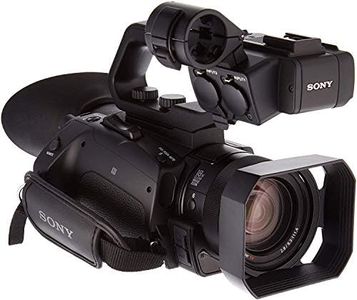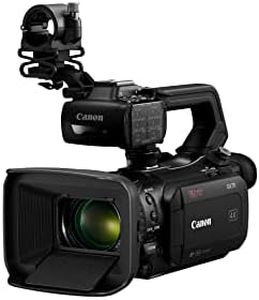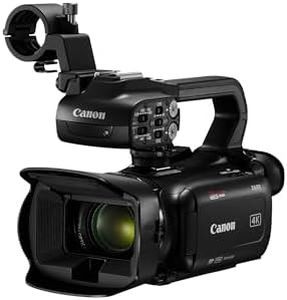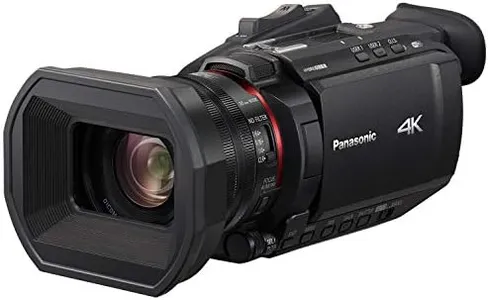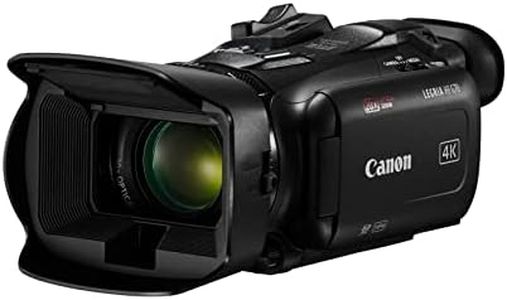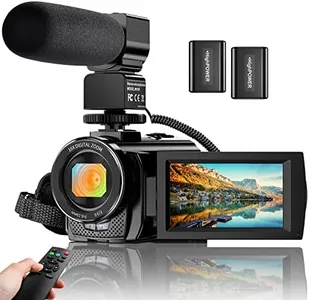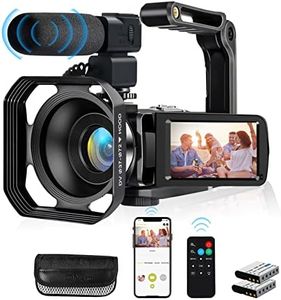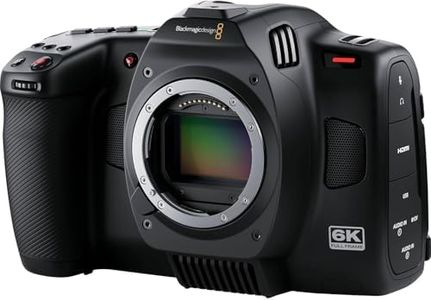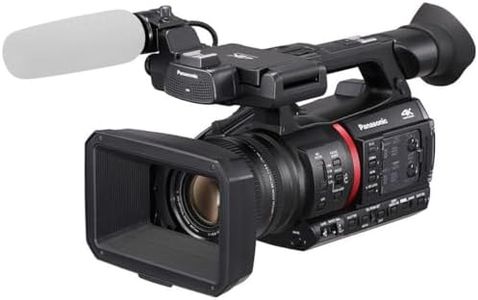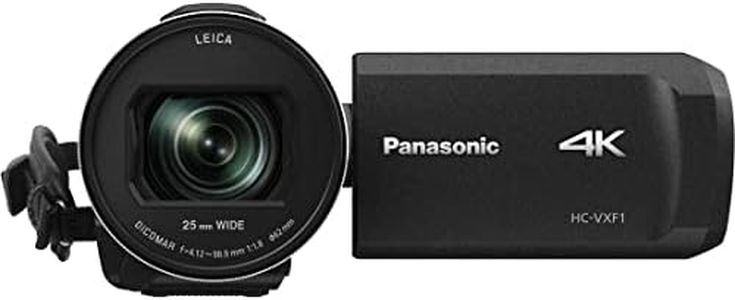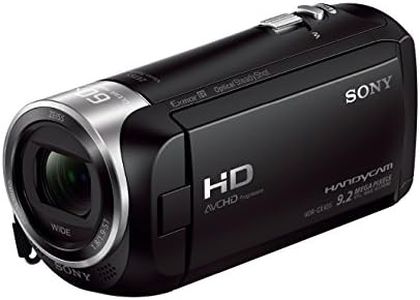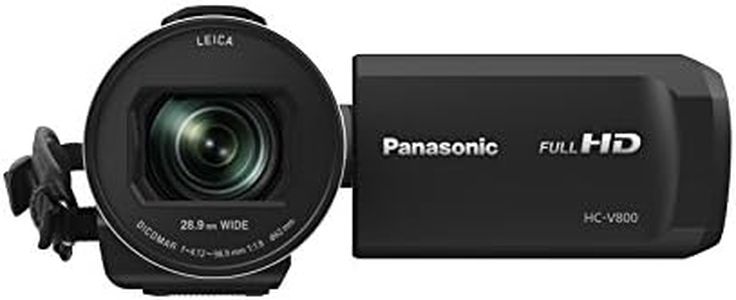We Use CookiesWe use cookies to enhance the security, performance,
functionality and for analytical and promotional activities. By continuing to browse this site you
are agreeing to our privacy policy
10 Best Professional Camcorders
From leading brands and best sellers available on the web.Buying Guide for the Best Professional Camcorders
Choosing the right professional camcorder is crucial, whether you're working in broadcasting, filmmaking, event recording, or content creation. It's important to understand that professional camcorders are more advanced than consumer models, offering better image quality, manual controls, and expandability. Before you buy, think about the type of videos you want to make, the environments you'll be filming in, and how much manual control you need. Always balance the technical capabilities of the camcorder with your comfort level operating it, making sure it matches your creative needs and workflow.Sensor SizeThe sensor is the part of the camcorder that captures light and turns it into an image. Sensor size impacts image quality, especially in low light, and affects the depth of field (how blurry the background looks compared to the subject). Smaller sensors (like 1/3'' or 1/2.3'') are typically found in compact or run-and-gun style camcorders, offering lots of zoom and easier focusing, while larger sensors (like 1'' or Super 35) give more cinematic looks and better performance in dim conditions. Pick a sensor size that matches your main shooting style: go larger if you want that film-like blur and work in controlled environments, or smaller for events and quick-action shooting where you need everything in focus.
Lens SystemProfessional camcorders come with either a fixed or interchangeable lens system. Fixed lenses are built into the camera and are simple to use, often having powerful zooms, ideal for news, events, and run-and-gun work. Interchangeable systems let you swap lenses for different looks and specialized uses, which is perfect for cinema, creative, or studio work. Decide based on how much versatility you need: if you need to adapt to many situations and creative styles, go for interchangeable, but if speed and simplicity are more important, a high-quality fixed lens is best.
Recording Formats and BitrateThe camcorder's recording format and bitrate determine the video’s quality and how easy it is to edit. Higher bitrates and professional codecs (like ProRes, XAVC, or AVC-Intra) capture more detail and color, which is great for post-production and broadcast. Simpler codecs (like MP4 or AVCHD) are easier to manage and save storage space, suitable for quick turnaround editing or streaming. If you're producing videos for TV, film, or heavy editing, prioritize professional formats and high bitrate; if your projects are simple, lighter formats will work fine.
Manual ControlsManual controls for focus, iris, white balance, and audio are essential for professional work, as they let you adjust settings for perfect results in tricky situations. Some camcorders only offer basic manual adjustments, while others have dedicated buttons, rings, and dials for fast changes. If you need precision and plan to work in changing conditions, look for a model with lots of manual controls placed within easy reach.
Audio InputsHigh-quality audio is just as important as great video. Professional camcorders should have XLR inputs, which allow you to connect external microphones for clear, noise-free sound. Some entry-level pro models may only have 3.5mm inputs, which are less flexible for demanding audio setups. If you expect to record interviews, live events, or rely on different microphones, choose a camcorder with XLR ports and manual audio level controls.
Image StabilizationImage stabilization helps keep footage smooth when you're shooting handheld or moving. Basic stabilization is fine for controlled or tripod work, but advanced stabilization (optical or electronic) is important if you'll be shooting on the go, such as in documentary or event work. Consider how much movement your shoots involve and select the stabilization features accordingly.
Output and ConnectivityProfessional work may require you to connect your camcorder to monitors, recorders, or live streaming setups. Common outputs include HDMI and SDI, with SDI being preferred for long cable runs and live production. Also look for Wi-Fi, Ethernet, or USB if you need file transfer or streaming features. Think about how you'll deliver footage or connect to other equipment, and choose connectivity that matches your workflow.
Battery Life and Media SlotsLong shoots require reliable power and recording time. Some camcorders use proprietary batteries with limited life, while others offer larger or swappable packs. Dual card slots are useful for backing up footage or extending recording time without stopping. If you work on long events or in places where recharging is hard, opt for strong battery options and multiple card slots to keep shooting uninterrupted.
